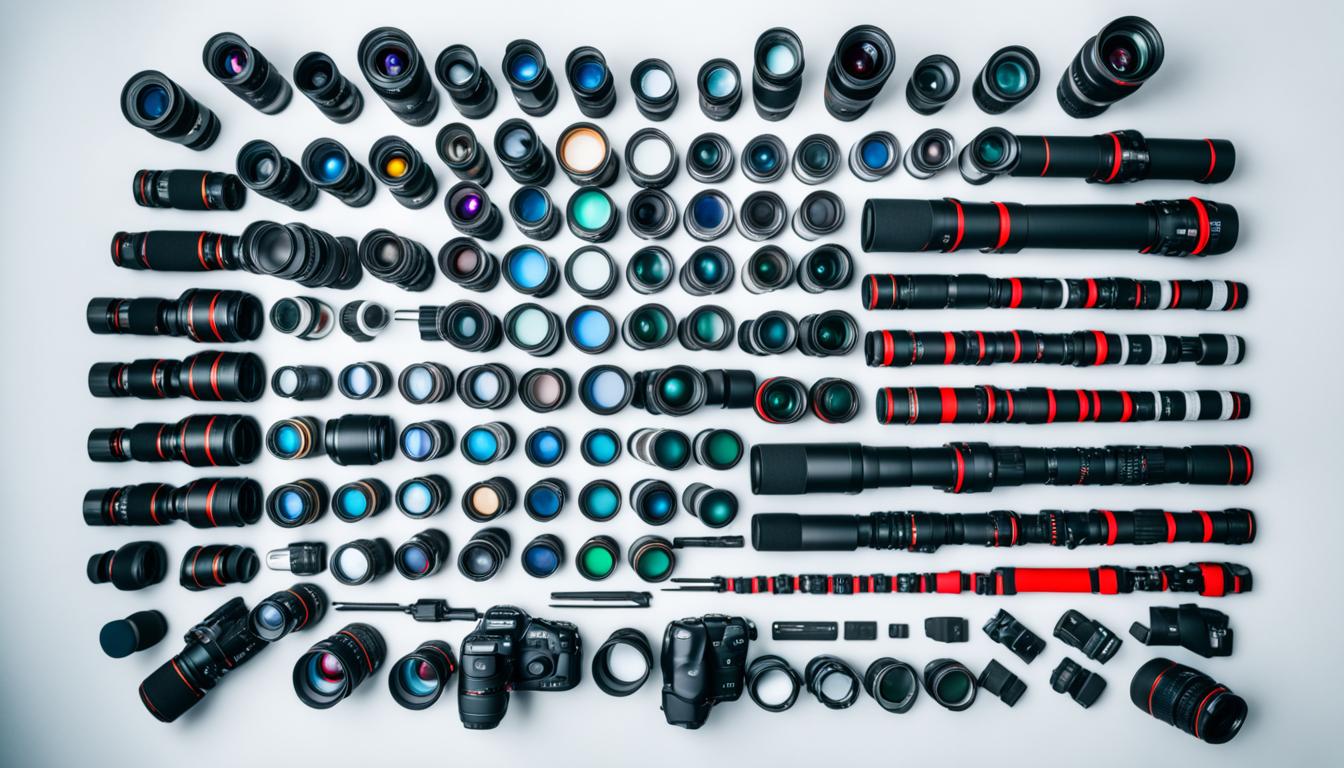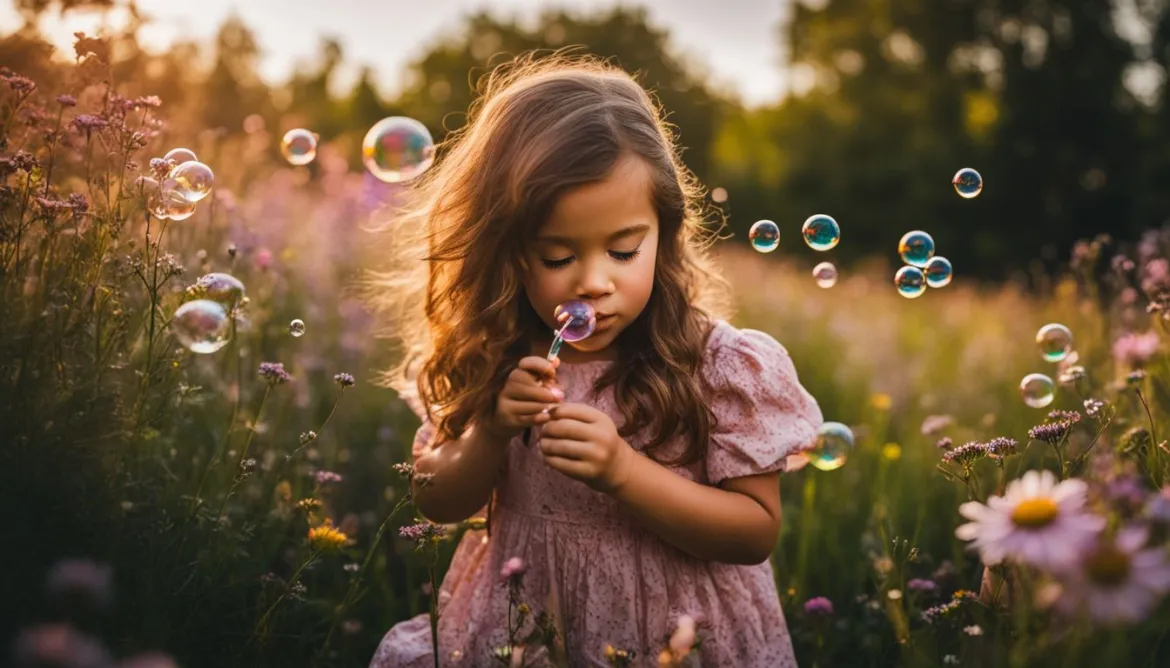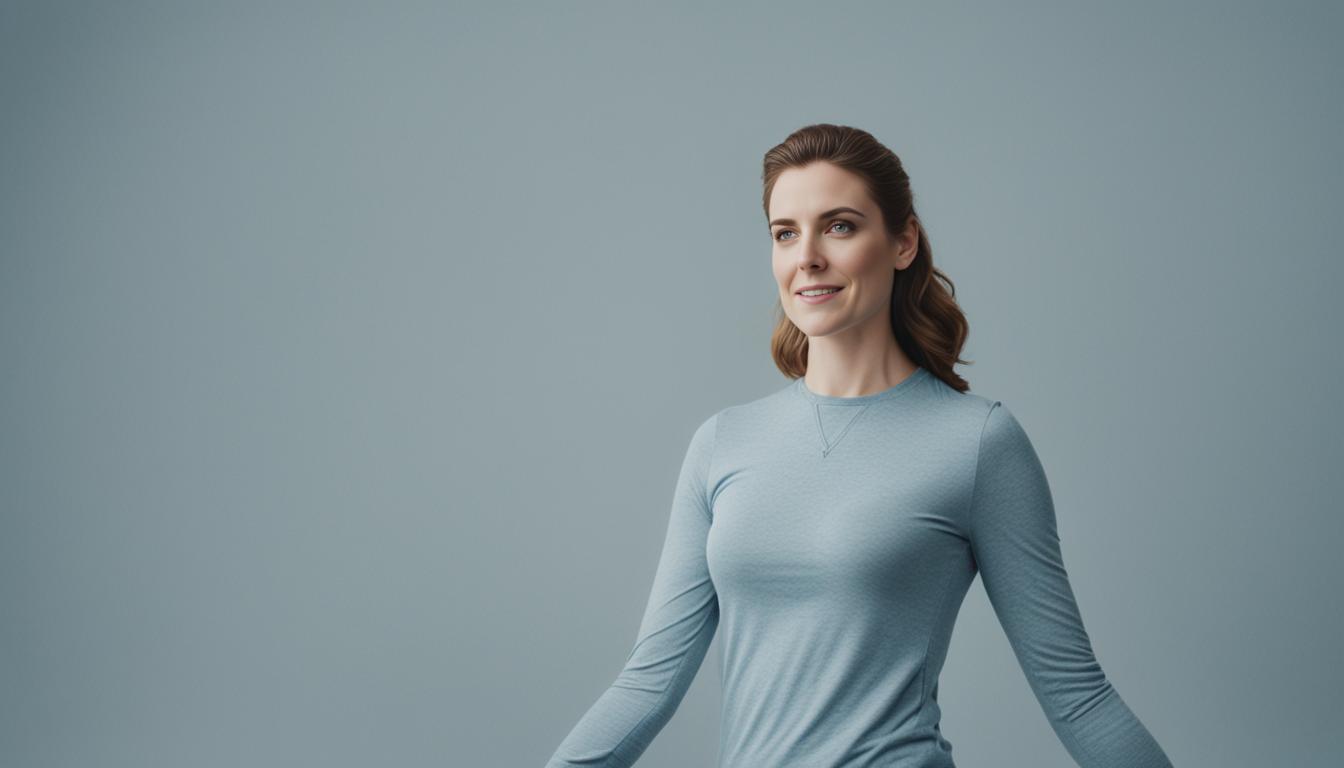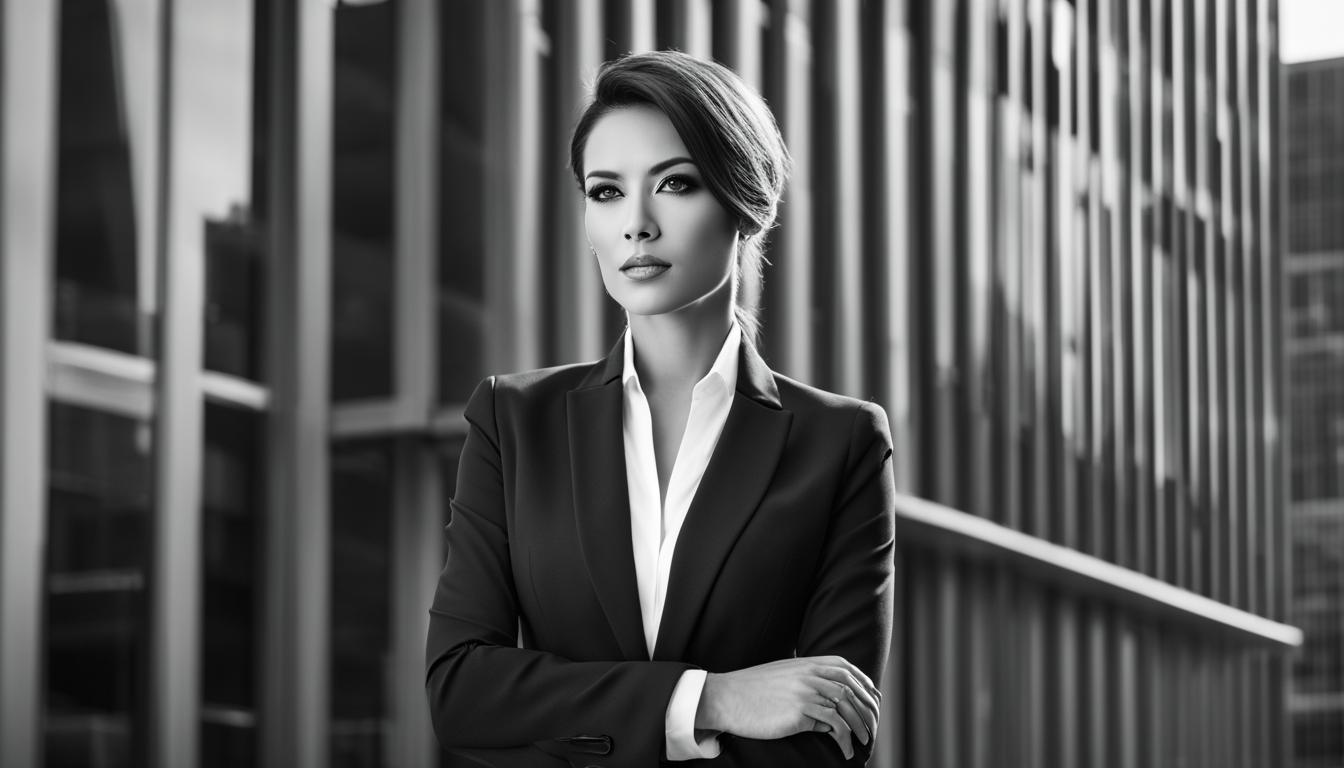Welcome to our comprehensive guide on essential gear for portrait photographers. Whether you’re a beginner or a seasoned professional, having the right equipment is crucial for capturing stunning portraits. In this guide, we’ll explore the must-have gear, portrait photography accessories, and top tools that will take your portrait photography to the next level.
Key Takeaways:
- Invest in a standard zoom lens for versatility in different types of portrait shots.
- Consider telephoto zoom lenses for creating beautiful background bokeh and separating the subject.
- Fast prime lenses with wide apertures are ideal for stunning background blur.
- A stable tripod is essential for sharp shots, especially in low-light conditions.
- Artificial lighting equipment like off-camera flash and modifiers can enhance the versatility of your portraits.
Recommended Standard Zoom Lenses
When it comes to portrait photography, having the right lenses in your gear arsenal is crucial. Standard zoom lenses provide a versatile range of focal lengths that allow you to capture a wide variety of portrait shots, from full-body to headshots. These lenses are designed to deliver optimal image quality and flexibility in portrait shooting situations.
Here are some of the best standard zoom lenses recommended for portrait photography:
| Brand | Lens | Maximum Aperture |
|---|---|---|
| Canon | 24-70mm f/2.8 | f/2.8 |
| Canon | 24-105mm f/4 | f/4 |
| Nikon | 24-70mm f/2.8 | f/2.8 |
| Nikon | Z 24-120mm f/4 | f/4 |
| Sony | 24-70mm f/2.8 | f/2.8 |
| Sony | 24-105mm f/4 | f/4 |
| Sigma | 24-70mm f/2.8 | f/2.8 |
These lenses offer excellent image quality, fast autofocus, and versatile zoom ranges that make them ideal for portrait photography. The wide maximum aperture of f/2.8 allows you to achieve beautiful background bokeh, making your subjects stand out. Whether you shoot with Canon, Nikon, or Sony cameras, there’s a standard zoom lens available for you to capture stunning portraits.
Telephoto Zoom Lenses for Separating Subject from Background
When it comes to portrait photography, one of the key goals is to create stunning images with a subject that stands out from the background. This can be achieved by using telephoto zoom lenses that offer a longer focal length range, such as a 70-200mm f/2.8. These lenses allow us to bring our subjects closer, effectively separating them from the background and creating a beautiful bokeh effect.
Telephoto zoom lenses are particularly well-suited for capturing headshots and portraits because they compress the perspective, resulting in a flattering and professional-looking image. With these lenses, we can isolate our subjects, making them the main focus of the frame.
Another advantage of telephoto zoom lenses is their ability to creatively shoot through interesting elements. Whether it’s a window, a hole in foliage, or other captivating foreground elements, these lenses allow us to capture unique and visually appealing shots that add depth and storytelling to our portraits.
For better depth of field control, it is recommended to use telephoto zoom lenses with wide apertures, like f/2.8. The wide aperture not only helps separate the subject from the background but also creates a pleasing blur effect, enhancing the overall aesthetic of the image.
If you’re on a budget but still want to experiment with telephoto capabilities, a telephoto kit lens like a 55-200mm f/4-5.6 can be a suitable alternative. While it may not offer the same wide aperture as professional-grade lenses, it can still deliver satisfactory results and allow you to explore the benefits of telephoto zoom lenses for portrait photography.
Fast Prime Lenses for Beautiful Background Blur
When it comes to capturing stunning portraits with a beautiful background blur, fast prime lenses are the go-to choice for many professional photographers. These lenses offer wide apertures, typically f/1.8 or wider, which allows you to achieve that coveted shallow depth of field and separation between the subject and the background.
Two popular options are the 50mm and 85mm prime lenses. The 85mm f/1.8 lens is a versatile choice that works well for full-body, half-body, and headshots. With its wider aperture, it creates a more pronounced background blur, resulting in a dreamy and ethereal effect. On the other hand, the 50mm f/1.8 lens is a more affordable option that performs exceptionally well in enclosed spaces such as indoor studios or small spaces.
These fast prime lenses not only provide excellent image quality but also offer crystal-clear optics, ensuring your subjects are sharp and well-defined. The wider aperture also allows for better low-light performance, giving you the flexibility to shoot in challenging lighting conditions without compromising on image quality.
If you’re looking to invest in fast prime lenses for your portrait photography, consider the following options:
| Lens | Aperture | Compatible Brands |
|---|---|---|
| Canon EF 50mm f/1.8 STM | f/1.8 | Canon |
| Nikon AF-S Nikkor 50mm f/1.8G | f/1.8 | Nikon |
| Sony FE 50mm f/1.8 | f/1.8 | Sony |
| Canon EF 85mm f/1.8 USM | f/1.8 | Canon |
| Nikon AF-S Nikkor 85mm f/1.8G | f/1.8 | Nikon |
| Sony FE 85mm f/1.8 | f/1.8 | Sony |
These prime lenses are compatible with popular camera brands such as Canon, Nikon, and Sony, ensuring that you can find the right lens for your specific camera model.
Whether you’re a professional portrait photographer or an enthusiast looking to take your portraits to the next level, investing in fast prime lenses can significantly enhance the overall look and feel of your images. So go ahead, experiment with different apertures, and create stunning portraits with beautiful background blur.
The Importance of Tripods in Portrait Photography
When it comes to capturing stunning portraits, having the right equipment is crucial. While a skilled photographer can work wonders with just a camera and lens, there is one accessory that should not be overlooked: the tripod. Tripods are essential tools in portrait photography, offering stability, preventing camera movement, and enabling you to achieve sharp, high-quality shots in various lighting conditions.

Whether you’re shooting in a studio, on location, or during travel, using a tripod ensures that your camera remains steady, providing a solid foundation for your creative vision. Let’s explore the importance of tripods in portrait photography and recommend some tripod options suitable for capturing stunning portraits.
The Benefits of Tripods in Portrait Photography
“A tripod provides stability, prevents camera shake, and allows for precise composition, resulting in sharper, more professional-looking portraits.”
- Stability: Tripods eradicate the risk of camera shake caused by hand-holding your equipment. This stability is especially crucial when shooting at slower shutter speeds or in low-light situations.
- Sharpness: With a tripod, you can achieve pin-sharp focus, even during longer exposures. This is invaluable for capturing every detail in your subject’s face and ensuring overall image clarity.
- Composition: Tripods give you the freedom to meticulously compose your shots. You can take your time to perfect the framing, experiment with different angles, and fine-tune your composition.
Recommended Tripods for Portraits
Choosing the right tripod for portrait photography depends on various factors such as shooting style, location, and budget. Here are some tripod recommendations tailored for capturing stunning portraits:
| Tripod | Features | Best Suited For |
|---|---|---|
| Manfrotto 190XPROB | Lightweight, sturdy, and versatile | Travel and outdoor portrait sessions |
| Manfrotto 475B Pro | Heavy-duty construction for stability | Location shoots and outdoor portraits with larger cameras and lenses |
| Manfrotto 058B | Stable and sturdy design ideal for studio setups | Studio portrait photography |
| Manfrotto 679B | Lightweight monopod for film and theater shoots | Film and theater portrait photography |
Investing in a reliable tripod that suits your portrait photography needs is essential for achieving consistent, professional results. Whether you’re a studio photographer, an on-location shooter, or a travel enthusiast, the right tripod can make all the difference in capturing stunning portraits.
Artificial Lighting for Portrait Photography
Artificial lighting offers us tremendous flexibility in capturing stunning portraits under any lighting conditions. It allows us to break free from the limitations of natural light and create our desired lighting setup regardless of the time of day or weather conditions.
When it comes to artificial lighting for portrait photography, one of the essential tools to have in your arsenal is an off-camera flash, commonly known as a speedlight. These compact and portable flash units can be easily mounted on light stands, enabling you to position the light source exactly where you need it to illuminate your subject.
Getting started with off-camera flash is relatively simple and can greatly enhance your portrait photography. Begin by investing in a single speedlight and a wireless trigger system that will allow you to trigger the flash remotely from your camera. This will give you the freedom to experiment with different lighting angles and positions to achieve the desired look for your portraits.
As you gain more experience and expand your lighting setup, you can add additional speedlights, light stands, and even studio strobes to create more professional lighting arrangements. These additional lighting tools will provide you with even more control over the intensity, direction, and quality of light in your portraits.
It is important to pair your speedlights and strobes with light modifiers to shape and direct the light effectively. Softboxes, beauty dishes, and umbrellas are popular choices for creating soft, diffused light that flatters your subjects. These modifiers help to eliminate harsh shadows and create a more pleasing and flattering lighting setup for your portraits.
Benefits of Artificial Lighting:
- Flexibility to create your desired lighting setup under any lighting conditions
- Freedom from the limitations of natural light
- Ability to work at any time of day or night
- Control over the intensity, direction, and quality of light
- Opportunity to experiment and get creative with different lighting setups
By embracing artificial lighting in your portrait photography, you open up a world of creative possibilities and take your portraits to the next level. With practice and experimentation, you can master the art of using artificial lighting to create stunning and impactful portraits that truly stand out.
| Artificial Lighting Equipment | Description |
|---|---|
| Off-Camera Flash (Speedlight) | Compact flash unit mounted on a light stand for flexible positioning. |
| Wireless Trigger | Enables remote triggering of speedlights or strobes from the camera. |
| Studio Strobe | More powerful flash unit for professional studio setups. |
| Light Stands | Supports the flash units or modifiers in the desired position. |
| Modifiers (Softboxes, Beauty Dishes, Umbrellas) | Shape and direct the light, creating different lighting effects. |
Reflectors for Modifying and Enhancing Light
Reflectors are essential tools for portrait photographers as they allow for subtle modification and enhancement of light. By strategically positioning reflectors, we can control the direction and quality of light, resulting in more flattering portraits.
Reflectors serve multiple purposes in portrait photography:
- Eliminating Shadows: Reflectors can bounce light onto shadowed areas of the subject’s face or body, reducing harsh shadows and creating a more even lighting distribution.
- Creating Catch Lights: By reflecting light into the subject’s eyes, reflectors can add a natural sparkle or catch light, which brings life and depth to the eyes in portraits.
- Adding Creative Effects: Reflectors with different color options, such as gold and silver, offer creative possibilities. Gold reflectors produce a warm, sunset-like glow, while silver reflectors provide a cooler and more intense light.
A popular choice for portrait photographers is a 5-in-1 reflector that offers various surfaces, including gold, silver, white, black, and translucent. These versatile and portable reflectors provide different lighting effects and can be easily folded and carried in a camera bag.
In-studio environments can benefit from a large reflector on a stand. Placed opposite the main light source, it can help soften shadows and create more evenly lit portraits. The larger size ensures a broader reflection while maintaining control over the light.
Whether shooting indoors or outdoors, reflectors are an indispensable tool in a portrait photographer’s kit. They offer flexibility in controlling light and allow us to enhance and shape the lighting for stunning portrait photographs.
The Importance of Learning to Use Artificial Light
While natural light can be sufficient for portraits, learning to use artificial lighting can greatly enhance our flexibility and creative possibilities as photographers. Artificial lighting allows us to work at any time of day, in any lighting conditions, and overcome the limitations of sunlight, season, and weather. By mastering the techniques of artificial lighting, we can achieve consistent and professional results in any environment.
Starting with off-camera flash is a great way to dip our toes into the world of artificial lighting. This portable and versatile lighting solution allows us to add light where we need it, control the direction and intensity of the light, and create stunning effects. Gradually expanding our equipment to include light stands and studio strobes empowers us to create more complex lighting setups and achieve even greater control over the final image.
There are several key benefits to learning artificial lighting for portraits:
- Flexibility: Artificial lighting opens up a world of creative possibilities. We are no longer limited by the availability and quality of natural light. With the right equipment and techniques, we can create the perfect lighting conditions for any subject, regardless of the time of day or location.
- Consistency: Natural light can be inconsistent and unpredictable, especially when shooting outdoors. Artificial lighting allows us to have complete control over the light source, resulting in more consistent and reproducible results. This is especially valuable for professional portrait photographers who need to deliver consistent quality to their clients.
- Overcoming lighting challenges: Artificial lighting is essential for overcoming difficult lighting situations. Whether it’s a dimly lit indoor venue, harsh midday sunlight, or a cloudy day, artificial lighting gives us the ability to shape the light and create the desired mood and atmosphere.
- Highlighting the subject: With artificial lighting, we can highlight the subject and separate them from the background. This adds depth and dimension to our portraits, creating a more visually striking image. By using techniques such as backlighting or rim lighting, we can create a beautiful halo effect around the subject.
- Opportunity for creativity: Artificial lighting allows us to experiment and push the boundaries of our creativity. By understanding the principles of light and shadow, we can create dramatic and artistic portraits that capture the essence and personality of our subjects.
“Artificial lighting gives us the power to shape light and create images that were previously impossible. It opens up a whole new world of creative possibilities.”
Learning to use artificial lighting for portraits is a valuable skill that can take our photography to the next level. It allows us to overcome the limitations of natural light, achieve consistent results, and unleash our creativity. By investing time and effort in learning and mastering artificial lighting techniques, we can elevate our portrait photography and create images that truly stand out.
Choosing the Right Camera and Lenses for Portraits
While the gear does not define a great portrait photographer, it is still important to choose the right camera and lenses for the desired results. When it comes to portrait photography, the selection of camera and lenses can greatly impact the quality and aesthetics of the final images.
For the best results in portrait photography, we recommend considering full-frame and APS-C format cameras for their sensor size and selective focus options. These camera formats offer superior image quality and low light performance, allowing you to capture every detail and achieve beautiful bokeh.
Two excellent choices for portrait photographers are the Canon EOS R6 and the Sony Alpha a6400. Both cameras offer advanced autofocus systems, high-resolution sensors, and intuitive controls, making them suitable for capturing stunning portraits with ease.
Alongside the right camera, selecting the appropriate lenses is crucial for achieving flattering and professional-looking portraits. When it comes to focal lengths, a range between 70mm and 200mm is preferred as it allows for flattering perspectives and comfortable working distances.
Recommended lenses for portrait photography include the Canon EF 70-200mm f/2.8L IS, Canon EF 24-105mm f/4L IS, and Canon EF 85mm f/1.2L. These lenses offer outstanding sharpness, beautiful bokeh, and excellent low light performance, ensuring that your subjects stand out and the background is nicely blurred.

“The right camera and lenses play a crucial role in capturing stunning portraits. With the right equipment, you can achieve beautiful image quality, pleasing background blur, and capture every detail, emphasizing the true essence of your subjects.”
Workflow Solutions and Additional Accessories
In addition to the essential gear for portrait photography, there are several accessories that can greatly enhance your workflow and provide additional functionality. These accessories are designed to make your photography sessions more convenient, efficient, and enjoyable.
Harness-Style Camera Straps
When shooting with multiple cameras, it can be a hassle to constantly switch between different camera straps. Harness-style camera straps, such as the HoldFast Money Maker Dual Camera Strap, provide comfort and convenience by allowing you to carry multiple cameras at once. This keeps your gear easily accessible while keeping your hands free to focus on capturing the perfect shot.
Useful Tools for Varying Shooting Styles
Depending on your shooting style and lighting situations, there are several tools that can prove invaluable. Tripods offer stability and allow for sharp shots in low light conditions. Wireless releases eliminate the need to physically touch the camera, reducing the risk of camera shake. Light meters help you accurately measure light levels for precise exposure control.
Instant Feedback and Collaboration with Laptop Tethering
Laptop tethering is a powerful technique that allows you to instantly view and assess your images on a larger screen, providing immediate feedback and the ability to make adjustments on the spot. This is especially useful for collaborative shoots where clients or team members need to review and provide input during the photoshoot. Laptop tethering promotes efficient communication and ensures that everyone is on the same page.
Integrating these workflow solutions and accessories into your portrait photography toolkit can greatly improve your efficiency, creativity, and overall shooting experience. They allow you to focus more on capturing stunning portraits and less on the logistics of equipment management.
Conclusion
In conclusion, the essential gear for portrait photographers comprises a standard zoom lens, telephoto zoom lens, fast prime lens, tripod, artificial lighting equipment, reflectors, and the right camera and lenses. These tools allow us to capture stunning portraits with clarity, depth, and creative control. However, it is important to note that gear alone does not guarantee excellent results. It is ultimately the skill, vision, and artistic approach of the photographer that brings portraits to life.
Investing in gear should be a gradual process that aligns with our evolving skills and needs. As we gain experience and master different techniques, we can expand our collection of equipment. Remember, the gear is a means to an end, and our ability to understand and manipulate light, compose compelling shots, and connect with our subjects is what truly sets us apart as portrait photographers.
So, while it is important to have the right gear, let’s not lose sight of why we picked up a camera in the first place—to capture the beauty, emotion, and essence of the human spirit. Let our passion guide us as we continue to refine our craft and create extraordinary portraits that leave a lasting impact.
FAQ
What are the essential gear for portrait photographers?
The essential gear for portrait photographers includes a standard zoom lens, telephoto zoom lens, fast prime lens, tripod, artificial lighting equipment, and reflectors. Additionally, choosing the right camera and lenses is important for desired results.
What are the recommended standard zoom lenses for portrait photography?
Recommended standard zoom lenses for portrait photography include Canon 24-70mm f/2.8, 24-105mm f/4; Nikon 24-70mm f/2.8, Z 24-120mm f/4; Sony 24-70mm f/2.8, 24-105mm f/4; and Sigma 24-70mm f/2.8 (for Canon, Nikon, and Sony E-mount).
What telephoto zoom lenses are suitable for separating the subject from the background?
Telephoto zoom lenses such as a 70-200mm f/2.8 are perfect for separating the subject from the background and creating stunning bokeh. Recommended options include Canon EF 70-200mm f/2.8L IS and a budget-friendly alternative, a telephoto kit lens like a 55-200mm f/4-5.6.
What fast prime lenses are great for creating portraits with beautiful background blur?
Fast prime lenses with wide apertures, such as 50mm or 85mm with f/1.8 or wider, are great for creating portraits with beautiful background blur. Recommended lenses include Canon EF 85mm f/1.2L and a more affordable option, a 50mm f/1.8 lens.
Why are tripods important in portrait photography?
Tripods are important in portrait photography as they provide stability, prevent camera movement, and allow for sharp shots in low light. They are essential for achieving precise composition and capturing fine details.
What are the recommended artificial lighting options for portrait photography?
For getting started with artificial lighting, off-camera flash, or speedlight, is recommended. Additional speedlights, light stands, and studio strobes can be added for more professional setups. It is important to pair them with modifiers like softboxes, beauty dishes, and umbrellas for directing and shaping the light.
How can reflectors be used in portrait photography?
Reflectors are essential tools for portrait photographers as they allow for subtle modification and enhancement of light. They can be used to eliminate shadows, create catch lights, and add creative effects. 5-in-1 reflectors with different color options, such as gold and silver, are versatile and portable.
Why is learning to use artificial lighting important in portrait photography?
Learning to use artificial lighting can greatly enhance a photographer’s flexibility and creative possibilities. It allows photographers to work at any time of day, in any lighting conditions, and overcome the limitations of natural light. Artificial lighting provides control over the light direction, intensity, and quality, resulting in more consistent and professional-looking portraits.
How should I choose the right camera and lenses for portrait photography?
When choosing a camera for portraits, full-frame and APS-C format cameras with selective focus options are recommended. Cameras like the Canon EOS R6 and Sony Alpha a6400 are excellent choices. For lenses, a range of focal lengths between 70mm and 200mm is preferred for flattering portraits. Recommended lenses include Canon EF 70-200mm f/2.8L IS, Canon EF 24-105mm f/4L IS, and Canon EF 85mm f/1.2L.
Are there any additional accessories that can enhance workflow in portrait photography?
Yes, there are additional accessories that can enhance workflow and provide additional functionality for portrait photographers. Harness-style camera straps like the HoldFast Money Maker Dual Camera Strap offer comfort and convenience when shooting with multiple cameras. Tripods, wireless releases, and light meters are useful tools for varying shooting styles and lighting situations. Laptop tethering allows for instant feedback and collaboration during the photoshoot.
What Essential Gear for Portrait Photography Can Also Be Useful for Macro Photography?
When it comes to macro photography, having the right equipment is crucial. Interestingly, many essential gear for portrait photography can also be useful for macro photography. Items like a sturdy tripod, remote shutter release, and a variety of lenses are all part of the macro photography equipment basics.




